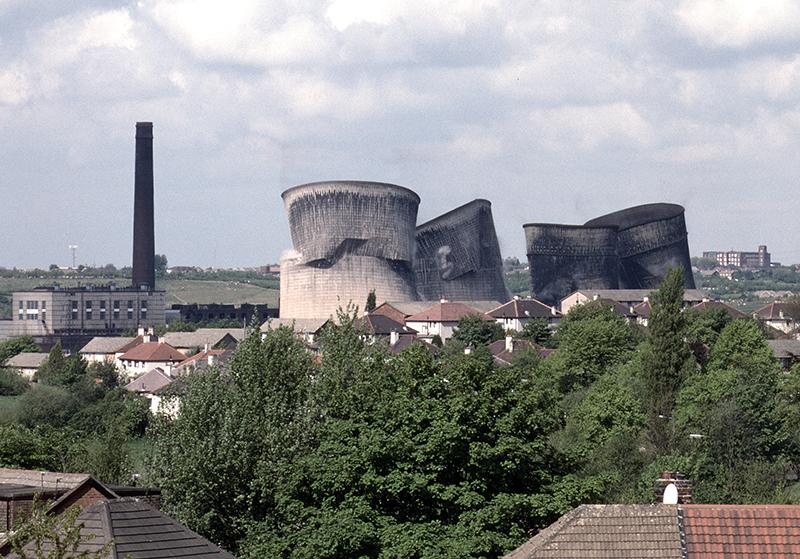Agecroft ‘A’ Power Station, Agecroft Road, Pendlebury
THE NEW POWER STATION – Like other large town Salford has become increasingly aware of the need for prompt and efficient development of its electricity supply. In May the Corporation decided to proceed with the erection of a new generating station at Agecroft. Here an admirable site, comprising about 65 acres, has been acquired, with many facilities for a large modern power station, having on one side a main road, on another the River Irwell, and on a third a railway and canal. It is estimated that the cost of the new station will be about £709,000. Contracts for all the principal plant have now been let and progress has been made in the shops. The site has been excavated by direct labour, and a start will be made on the buildings in the first week of the new year. The station will allow for considerable expansion and the running cost are expected to be remarkably low. It is thought that the station will be completed by the summer of 1924. [Manchester Guardian 1 January 1923 page 9]
SALFORD CORPORATION ELECTRIC POWER STATION, AGECROFT. - The construction of the power station was commenced in January 1923, and the station was put into commission in December 1924. At present it supplies the City of Salford and the Urban District of Prestwich, with a combined population of about 260,000, but as it is one of the selected stations under the National or Grid Scheme for electricity supply, it will soon be supplying a much larger area. The total capacity of the station is 57,500 kw. with plant consisting of three 12,500 kw. and one 20,000 kw. generating sets. The last-mentioned set is now being installed.
Coal Supplies and Handling. — Coal supplies are available by road, rail or canal. Rail- and canal-borne coal is brought for a distance of about half a mile from Clifton Junction sidings and the canal bank, in trucks drawn by an electric locomotive on a narrow-gauge line. Ample storing ground for coal is available.
Boiler-House. - The boiler equipment comprises six Babcock and Wilcox marine cross-drum type boilers installed in 1923-4, each rated for a normal evaporation of 65,000 lb. per hour, the overload capacity being 78,000 lb. per hour for two hours. There are also in course of installation two John Thompson four-drum vertical bent-tube boilers, with integral economizers arranged as a third bank of tubes, each rated at a normal evaporation of 100,000 lb. per hour with an overload capacity of 20 per cent. Each of these boilers is fitted with the Underfeed Company's "L" type twin chain-grate stokers. Each boiler unit is complete in itself with economizer, separator, forced and induced draught fans and steel chimney, with the addition of air-preheaters and grit catchers on the two Thompson boilers. The working pressure is 325 lb. per sq. in., and the superheaters raise the temperature of the steam to 720° F. at the stop-valve. Both steam and electrically driven feed-pumps are installed, and the station operates on the closed feed system.
Turbine-House. — There are four turbo-alternator sets, built by the Metropolitan-Vickers Electrical Company, each rated at 3,000 r.p.m. Nos. 1 and 2 are single-cylinder sets, each of 12,500 kw. maximum continuous rating; No. 3 is a two-cylinder set of the same capacity; and No. 4 is a two-cylinder set of 20,000 kw. capacity.
Cooling Water and Towers. — The River Irwell has so for provided sufficient water for condensing purposes, but with the increased loads which are anticipated in the future there is no doubt that it will be necessary during dry periods to use the cooling towers which were provided as a safeguard when the station was built.
Agecroft Station with an average thermal efficiency of 18.71 per cent was the most efficient of its group in the Kingdom for the year ended 31st March 1928. The group comprised all the power stations, thirty-two in number, with an annual output between 50 and 100 million units. The station has to supply the whole load of its district at all times without assistance, and the efficient results obtained are not therefore in any way due to very high plant or station load factors obtained by parallel running with other stations. [1929 Institution of Mechanical Engineers: Visits to Works. June 1929 page 735-736]

Demolition by explosive, 8 May 1994
